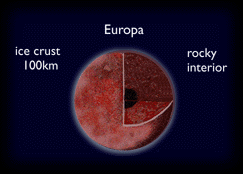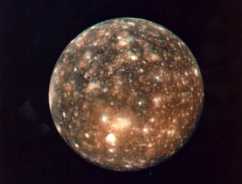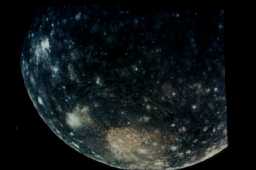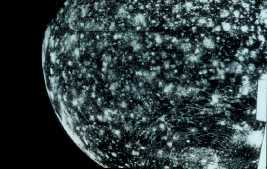This is a diagram of the nine different kinds of ice.
Click on image for full size
Image from: Bridgeman, [1937]
How do we know there is water?
A cube of ice can take on different shapes and sizes, and can even change to a liguid or a gas. Some of the shapes the ice crystal can assume are shown in the diagram to the left. There are
nine different kinds of shapes the ice crystal can assume. A basic ice cube from your refrigerator is known as Ice I. (There is a science fiction story about a mad scientist who tried to freeze the earth by turning the ocean into Ice Nine). If it becomes warm enough, the ice can change to water, so the pertinent question is, whether it ever became
warm enough in some region of a moon, for there to be a water layer.
You might also be interested in:

The diagram shows possibilities for the interior structure of Europa. There is a core of rocky material buried inside, overlain with ice of various phases. The diagram shows that there may be an ocean
...more
Amalthea was discovered by E Barnard in 1872. Of the 17 moons it is the 3rd closest to Jupiter, with a standoff distance of 181,300 km. Amalthea is about the size of a county or small state, and is just
...more
Callisto was first discovered by Galileo in 1610, making it one of the Galilean Satellites. Of the 60 moons it is the 8th closest to Jupiter, with a standoff distance of 1,070,000 km. It is the 2nd largest
...more
Most of the moons and planets formed by accretion of rocky material and volatiles out of the primitive solar nebula and soon thereafter they differentiated. Measurements by the Galileo spacecraft have
...more
Many examples of the differing types of terrain are shown in this image. In the foreground is a huge impact crater, which extends for almost an entire hemisphere on the surface. This crater may be compared
...more
The surface of Callisto is deeply pockmarked with craters. It looks to be perhaps the most severely cratered body in the solar system. There are also very large craters to be found there. The severity
...more
Europa was first discovered by Galileo Galilei in 1610, making it one of the Galilean Satellites. Europa is Jupiter's 4th largest moon, 670,900 km from Jupiter. With a diameter that is about half the distance
...more








